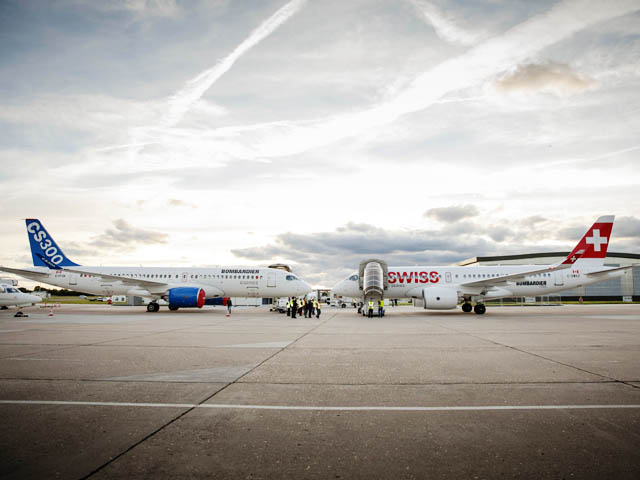Leeham News and Analysis
There's more to real news than a news release.
Embraer CEO interview: oil prices, Brazil’s economy, China

Paulo Cesar, president and CEO of Embraer’s commercial aviation unit. Photo via Google images.
Subscription required
Introduction
Part 3
Sept. 14, 2015, © Leeham Co. It’s only been three months since the Paris Air Show and there have been some significant developments in the world that have impact on commercial aviation:
- Oil prices dropped from about $62/bbl to a low of $38 in mid-August and it’s climbed back to about $46 this week;
- China devalued the Yuan;
- The Brazilian economy has deteriorated and so has the domestic political situation; and
- Some LCC airlines in Asia are feeling the strain of growth and weakening currencies.
We talked with Paulo Cesar, president and CEO of Embraer at the Paris Air Show on some of these topics. We caught up with him Sept. 2 in Seattle, revisiting these topics and talking about more.
Boeing 777X heading towards design freeze a bit heavier than planned.
By Bjorn Fehrm
Subscription required
Introduction
July 12, 2015, © Leeham Co. As we reported from Boeing’s Paris Air Show briefing, Boeing’s 777X project is progressing to a design freeze later in 2015. At the briefing everything was presented as being on track with no changes of key data. There have been signs that this in not fully the case. The 777X program is suffering the same disease that hits other aircraft programs, weight gain flu.
To understand it better, we compiled the many indications that points to weight increase and ran them through our proprietary model to understand why and see what it means for the aircraft’s performance.
Summary:
- Weight increase is an evil that all aircraft programs battle with. Our analysis shows that 777X is no different.
- Engine thrust is one of the areas which will be increased to mitigate increased weight. We give the latest status of GE9X thrust development, now beyond 105,000 lb.
- A number of airframe changes have been made. We analyze their consequences and make predictions for future maximum weight increases.
Airbus, Boeing YTD orders assessed (Update)
Update, July 8: In our original post, we omitted 44 Boeing 737NGs from the YTD firm orders. The charts and text have been updated to reflect this information.
July 7, 2015, © Leeham Co. Airbus pulled ahead of Boeing in firm orders through June, and both companies have a number of commitments that were announced at the Paris Air Show that aren’t included in the year-to-date tally.
Airbus leads with single-aisle orders and Boeing leads with widebody orders, but at the half-way point of the year, the contest is far from over. The leads could shift or increase, depending on how the balance of the year goes.
Volga deal for 747-8Fs not as solid as assumed by some; production rate reduction likely
June 23, 2015, © Leeham Co. The Memorandum for Understanding for expansion of the Boeing 747-8F fleet of Volga-Dnepr announced at the Paris Air Show is somewhat less than met the eye at the time.

Despite a few orders subsequent to this chart’s creation in January 2015, the 747-8 production gap is insurmountable. The Paris Air Show announcement of Volga-Dnepr fleet “expansion” by 20 747-8Fs is more about options than firm orders, according to market intelligence, which does nothing to fill the gap unless exercised. The expansion is over seven years, which also fails to fill the gap at current production rates. Click on image to enlarge.
Although Boeing said the 20 airplanes will be added through a mix of direct purchases and leases over seven years, it didn’t indicate how many firm orders, options and leases were involved nor the delivery timeline. Market Intelligence indicates perhaps two of the 20 are white tails, aircraft that were built without customers. If correct, this won’t add to the backlog or production stream. Neither would options, unless exercised. Market Intelligence also indicates that firm orders are in the mid-single digits, which if correct is a far cry from what Boeing needs to fill the production gap
Some media and aerospace analysts concluded this deal meant 20 firm orders equal to a year-and-a-half worth of work for the struggling 747-8 production line, but Boeing said the fleet “expansion” is streaming the deliveries over seven years. If evenly spread, adds up to three aircraft in the production stream if all were new orders and not white tails, and options were converted to orders. Even this interpretation fails to fill the production gap.
A Boeing spokesperson said, “We are in discussion with Volga-Dnepr Group and will provide details when ready. There is nothing else we can add here.”
Accordingly, we expect Boeing to announce a reduction in the 747-8 production rate sooner than later. The current rate is 18/yr, declining to 16/yr from September. Boeing previously said it can still make money at 12/yr, so we expect the rate to be reduced to at least this level. However, as the chart shows, the current firm order backlog doesn’t support even this reduced rate.
The USAF indicated it wants to receive the first of two replacements for Air Force One in 2018.
What raised questions over the solidity of the Volga announcement was the way Boeing worded the press release last week at the PAS. All other press releases were specific about orders and options, except the Volga release, which contained highly unusual wording, a departure from Boeing’s standard boiler-plate. Excerpts of these releases are below the page break. We made inquiries in the market, and the results are outlined above.



 and Chief Executive Officer. “After five months on the job, I have a better understanding of our challenges and opportunities. We are taking specific action, including the launch of our Bombardier transformation plan, a disciplined approach to cash management, and the strengthening of our leadership team to reshape the company and ensure our long-term success.”
and Chief Executive Officer. “After five months on the job, I have a better understanding of our challenges and opportunities. We are taking specific action, including the launch of our Bombardier transformation plan, a disciplined approach to cash management, and the strengthening of our leadership team to reshape the company and ensure our long-term success.”

